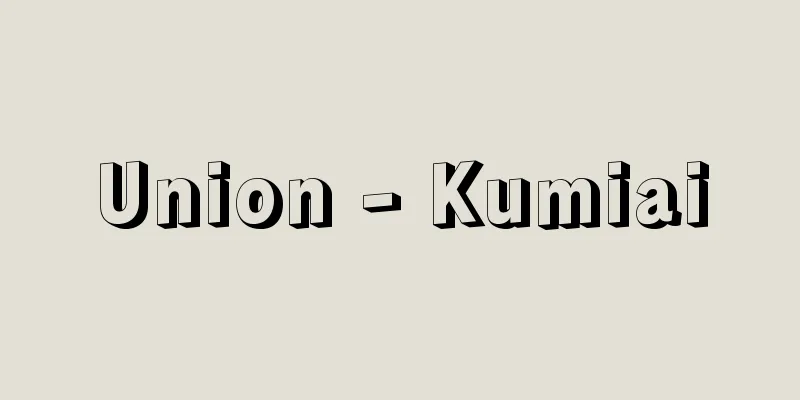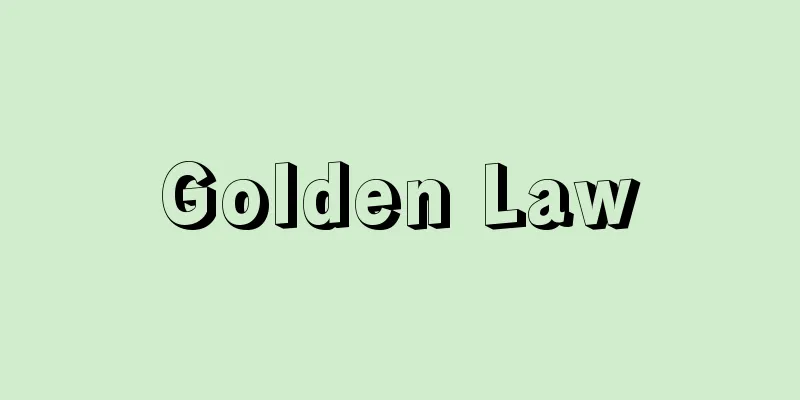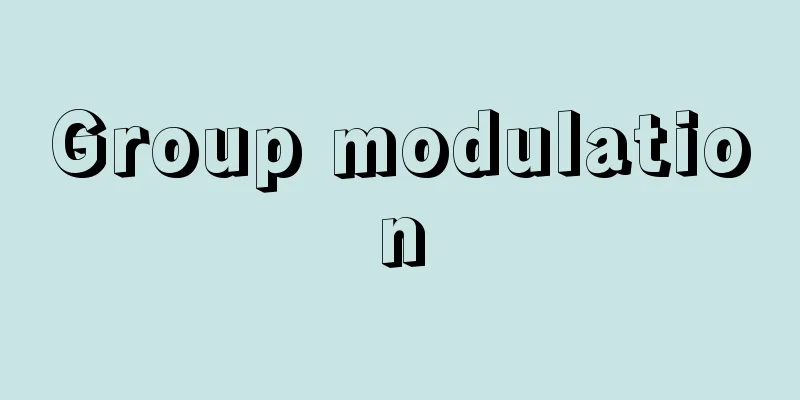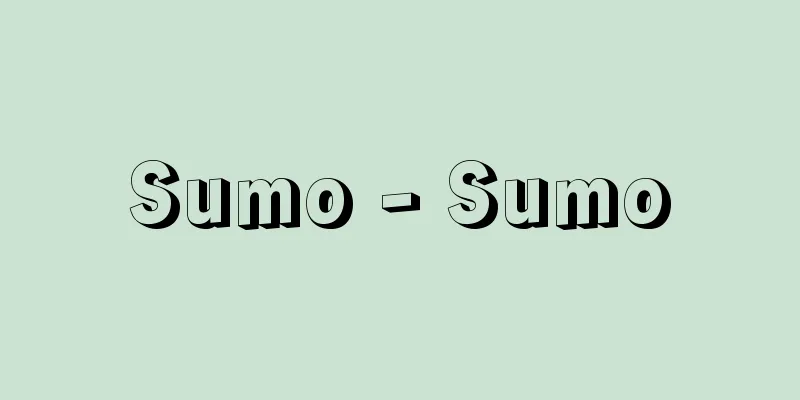Union - Kumiai

|
An organization formed under a kind of contract by people with a common goal, for the purpose of improving occupational and working conditions, for business interests, or sometimes for mutual assistance in daily life. In pre-modern societies, merchants and industrialists with the same occupation formed "za" or "kabu nakama" (stock associations) to protect their business interests, townspeople formed "tanomoshiko" or "mujinko" (reliance associations) for mutual assistance in daily life and the convenience of temporary loans, and farmers formed "goningumi" (five-person associations) with their neighbors; these could in a sense be considered unions. However, most of these organizations were basically formed only to the extent that they conformed to the policies or intentions of the ruling class of the time, and were not formed through mutual contracts based on the free judgment and independent will of the members. It was only after modern society was established and matured that unions in their original form began to emerge in a variety of different types and forms. As modern society developed, class conflict between the capitalist class and the working class intensified. At the same time, the relationships between the self-employed and the various classes within the working class became more complex, and their conflicts of interest became more intricate. Furthermore, each class had greater freedom to form organizations in accordance with their own interests and ideals. These groups then came to be clearly recognized by law as unions. [Kunio Motoshima] Various associations under special lawsA typical example of a union in modern society is a labor union, as stipulated by the Labor Union Law. It is considered to be an organization formed voluntarily by workers themselves with the aim of maintaining and improving working conditions and improving the social status of workers. Therefore, unlike political parties, it includes members with various ideologies and beliefs. A labor union is formed when workers cooperate together based on an agreement to achieve their demands as workers, transcending differences in ideology and beliefs. However, among workers, it is quite possible that the content of their demands and the way they are achieved will differ depending on their class, occupation, company, and region. For this reason, it is rare for a single labor union to be organized in a single national economy, and in many cases, labor unions end up splitting into various organizations. Furthermore, their activity policies and forms become diverse. Not only workers but also self-employed people may form associations to solve various problems in business and life. Cooperatives are formed to protect the common interests in issues related to production, distribution, and consumption. Farmers, who are in a weak position as commodity producers, have tried to democratize and rationalize rural life and agricultural management, develop credit and purchasing businesses through mutual solidarity, and establish a favorable position in business in society. For this purpose, agricultural cooperatives were established based on the Agricultural Cooperatives Law and have continued to develop their activities to this day. Also, citizens, from the standpoint of consumers, have created and developed consumer cooperatives based on the Consumer Cooperatives Law in order to directly take charge of the production and distribution mechanisms and obtain better products at cheaper prices, in order to oppose price manipulation by big capital and the burden of various expenses on consumer prices due to irrational distribution mechanisms. In addition to these, there are commercial and industrial cooperatives based on the Commercial and Industrial Cooperatives Law and national health insurance associations based on the National Health Insurance Law. [Kunio Motoshima] The dual nature of unionsThus, today, a wide variety of unions have been created based on the interests of different classes and citizens. Among them are, of course, labor unions, but some, such as the agricultural and consumer cooperatives mentioned above, have grown into national organizations with great financial and vocal power. These so-called giant unions send representatives to advisory councils and exert a certain amount of pressure based on their financial strength and ability to gather votes in elections, thereby influencing the way policy is decided. In these cases, unions act as pressure groups and play a leading role in participating in policy. In this sense, too, unions are becoming an important factor in determining the nature of modern society. [Kunio Motoshima] "Labor Unions" by Ken Kurita (1983, Japan Labor Association) [Reference] | | |Source: Shogakukan Encyclopedia Nipponica About Encyclopedia Nipponica Information | Legend |
|
職業労働条件の向上のために、あるいは営業上の利害のために、ときには生活の相互扶助のために、目的を共通にする人々が、一種の契約に従って構成する団体。近代以前の社会では、職業を同じくする商工業者が営業上の利益を守るために「座」や「株仲間」をつくったり、町人たちが生活の相互扶助や一時的融資の便のために「頼母子講(たのもしこう)」あるいは「無尽講」をつくったり、農民たちが近隣のもの同士で「五人組」などをつくっており、これらもある意味では組合とみなすことができる。しかしこうした団体は、基本的にはその時代の支配者層の政策あるいは意向にかなう限りで構成されたものが多く、成員の自由な判断と自主的な意欲に基づく相互の契約を媒介にして構成されたものではなかった。 本来の組合が多様な種類と形態をもって族生するようになるのは、近代社会が成立し、成熟してからであった。近代社会の発展とともに、資本家階級と労働者階級の階級的対立が激化してきた。同時に自営業層、労働者階級内部の諸階層相互の関係も複雑になるとともに、その利害対立も錯綜(さくそう)してきた。また、それぞれの階層が自らの利害と理念に応じて団体を結成する自由も拡大してきた。そしてこのような団体が、法的にも組合として明確に承認されるようになった。 [元島邦夫] 特別法上の各種組合近代社会における組合として代表的なものは労働組合法によって規定されている労働組合である。これは、労働条件の維持、改善と、労働者の社会的地位向上を目的として、労働者が自らの力で自主的に結成した団体であるとされている。したがって政党などとは異なり、さまざまな思想、信条の持ち主をその成員として含んでいる。思想、信条の違いを越えて、労働者としての要求を達成する点で、合意に基づいて一致協力するところに、労働組合としてのまとまりが形成されるのである。しかし労働者内部では、階層、職業、企業、地域によって、要求の内容、その達成の仕方が異なることは十分ありうる。そのために、労働組合が一つの国民経済において一つだけ組織されることは少なく、多くの場合、労働組合はさまざまな組織に分かれる結果となる。また、その活動方針も活動形態も多様なものとなるのである。 労働者のみならず自営業者層も、営業上、生活上のさまざまな問題を解決するために組合を結成することがある。生産、分配、消費をめぐる課題について、共同の利益を守るために結成される協同組合がそれである。商品生産者として弱い立場に置かれている農民は、農村生活、農業経営のあり方を民主化、合理化し、相互の一致団結によって信用事業と購買事業を発展させ、営業上有利な立場を社会のなかで樹立しようとしてきた。そのために、農業協同組合法に基づいて設立され、現在までその活動を発展させてきたのが農業協同組合である。また市民は、消費者という立場から、大資本による価格操作、非合理的な流通機構による諸経費の消費者物価へのしわ寄せなどに対抗して、生産、流通のメカニズムを直接担い、よりよい商品をより安い価格で手に入れようとして、消費生活協同組合法に基づく消費生活協同組合をつくりあげ育ててきた。このほかにも商工協同組合法による商工協同組合、国民健康保険法による国民健康保険組合などがある。 [元島邦夫] 組合の二面的性格このように現在では、多様な組合がそれぞれの階層的利害、市民的利害に基づいて数多くつくりだされている。そのなかには、労働組合はもちろんのこと、前述した農業協同組合や消費生活協同組合のように、全国的な組織にまで成長し、大きな財政力と発言力とを兼ね備えるようになったものもある。これらのいわば巨大組合は、審議会にその代表を送り込んだり、財政力、選挙時における集票能力などを背景として、ある種の圧力をかけたりして、政策決定のあり方を左右するまでになっている。組合はここでは圧力団体となったり、政策参加の主体的担い手となったりしているのである。こうした意味でも、組合は現代社会のあり方を規定する重要な一要素となりつつある。 [元島邦夫] 『栗田健著『労働組合』(1983・日本労働協会)』 [参照項目] | | |出典 小学館 日本大百科全書(ニッポニカ)日本大百科全書(ニッポニカ)について 情報 | 凡例 |
<<: Union-managed health insurance - Kumiaikanshokenkouhoken
Recommend
Filters
Filters are used to transmit or block certain wav...
The Impaler King
...He was later pardoned and re-elected to the th...
Schwob, Marcel
Born: August 23, 1867. Chabir [Died] February 26, ...
Convention for the protection of fur seals
… [background] Because their fur is high quality ...
Koi (carp) - Carp
A fish of the carp family. It is widely distribute...
tjap
...Around this time, batik was also made from sil...
Sanmon (Sanmon)
The Buddhist gate of a Zen temple. Sanmon means th...
October Incident
This was a full-scale fascist coup d'état mas...
Clerodendrum foetidum (English spelling) Clerodendrum foetidum
…[Kazuo Furusato]. … *Some of the terminology tha...
manngjerd
...The coastal areas of the country were therefor...
Optical electronics
…Optical electronics is also known as optronics. ...
aside
Aside: A side remark made during a theatrical perf...
Vimalakirti Sutra - Yuimagyo
A Buddhist scripture. It is one of the Mahayana s...
Moromoro (English spelling) moro‐moro
A popular drama performed on a temporary outdoor s...
Kanji education
…In October 1981, the Cabinet announced that 1,94...









